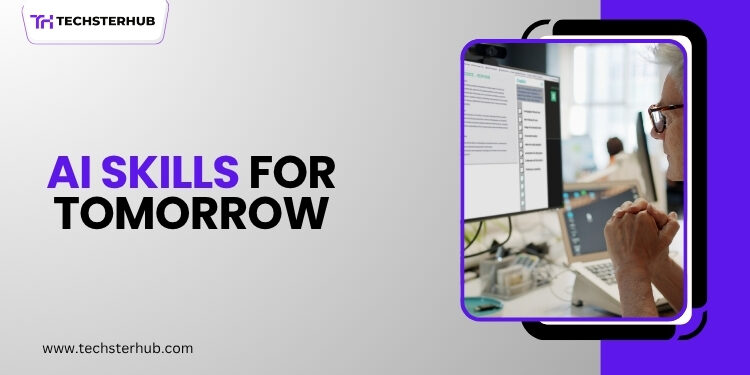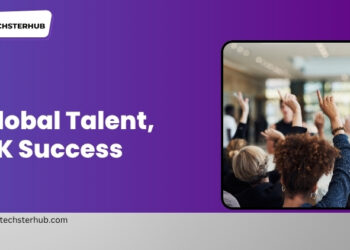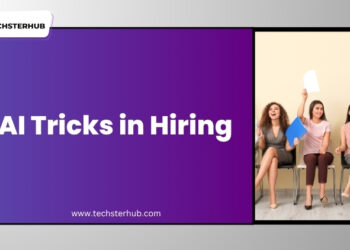Introduction
Artificial intelligence (AI) is no longer a futuristic concept – it is redefining industries, changing job roles, and redefining the skills employees need to be successful. From manufacturing automation to finance AI-powered analytics to marketing generative tools, technology is developing at an unprecedented rate.
In order to remain competitive, organisations must invest in workforce reskilling for AI and equip their employees with the knowledge and capabilities to thrive in an AI-driven workplace.
Reskilling is an imperative for businesses, not a nice-to-have. Companies that prepare their teams are able to secure a competitive edge, productivity and retain the best of the best, while those who put off preparations run the risk of falling behind. Reskilling the workforce adequately for AI is challenging and this article focuses on the strategies, challenges and best practices to achieve successful reskilling for AI and shares some actionable takeaways for HR leaders, executives and managers.
Why Workforce Reskilling for AI Is Important
1. Rapid Technological Change
According to the World Economic Forum, nearly 50% of employees will need to be significantly reskilled by 2027 because of automation and AI. Routine, manual job tasks are most endangered while new jobs like AI engineers, data analysts and prompt engineers are popping up fast. Without proper reskillers organisations are faced with talent shortages and lost productivity.
2. Maintaining Competitive Advantage
Companies that focus on developing their AI workforce get a clear edge. AI-driven employees can streamline processes, develop groundbreaking solutions, and implement information-based conclusions more quickly than rivals. Reskilling means keeping organisations agile and able to quickly respond to market changes.
3. Employee Retention & Employee Engagement
Reskilling shows that a company does value its people Employees who have a sense of growth and possibilities for learning are more engaged, productive and likely to stay on. In a competitive job market, workforce reskilling for AI is also a great retention strategy.
Challenges in Workforce Reskilling for AI
Skill Gaps and Legacy Systems
Many employees lack basic digital literacy or understanding of AI tools, so it is important to train employees on how to use it. Additionally, very old infrastructures for IT, so that the access to modern learning platforms is limited, there is going to be a slower adoption.
Resistance to Change
Introducing AI can be a cause for worry, or defiance, for employees who may be afraid of losing their jobs, or even overwhelmed by the new technology. This is an important fact to overcome the mindset for successful reskilling programs.
Budget Constraints
Reskilling programs are demanding investments in learning platforms, instructors, and time from the employees. Organizing cost with other business priorities is a challenge that is familiar to many.
Measuring ROI
Without defined metrics, it may be difficult for organisations to measure the impact of reskilling initiatives. Tracking participation, improvement in skills and its application in the real work scenario is essential.
Step by Step Method of Workforce Reskilling for AI
1. Conduct a Skills Audit
Define and benchmark current skills to the skills needed for AI operations. Identify gaps and analyze the risk of automation for the positions that are most vulnerable. In this regard, tools like HR analytics platforms, competency matrices, and input from managers could be beneficial.
2. Develop a Structured Learning Roadmap
A learning roadmap should be comprised of technical skills (AI tools, data analytics, machine learning basics) as well as soft skills (critical thinking, adaptability, collaboration). The roadmap should provide learning paths for beginners, intermediate learners and enthusiasm practitioners.
3. Provide Multiple Ways of Presenting the Same Lesson
Different employees learn in different ways. Combine online courses, live workshops, mentoring, microlearning modules and hands-on projects. Hackathon or AI innovation labs promote hands-on learning and engagement.
4. Embracing AI Tools into Business as Usual
Further, learning is enhanced by experience. For example:
- Marketing teams can experiment with AI-powered content creation tools.
- Operations teams can use predictive analytics for supply chain optimisation.
- Sales teams can leverage AI for lead scoring and customer insights.
5. Suffice it to say, create a culture of continuous learning
Reskilling should be on an ongoing basis. Encourage experimentation, reward achievements in learning and create opportunities for cross-departmental knowledge sharing. A curious and innovative culture helps to control the relevance of skills.
6. Track the Performance and Optimize Programs
Measuring effectiveness using:
- Training completion rates
- Application of skills in daily tasks
- Productivity and efficiency improvements
- Employee engagement and retention metrics
Use this data to refine programs, ensuring continuous improvement and maximized ROI.
Key Roles and Skills in the AI Era
Emerging Roles:
- Data Analysts & Scientists: Transform AI-generated insights into actionable decisions.
- AI Ethics & Compliance Officers: Ensure responsible and legal AI use.
- Prompt Engineers: Optimise queries for generative AI systems.
Critical Skills:
- Data Literacy: Understanding and interpreting AI-driven data.
- Human-AI Collaboration: Knowing when to rely on AI and when human judgment is necessary.
- Adaptability & Problem-Solving: Navigating rapid changes and complex challenges.
Lessons from Leading Organisations
Tech Industry Example:
A global technology company started an internal AI academy that provides machine learning courses and mentor-ships. Within 2 years, 60% of physicians had learned new AI skills and the results included faster course product development and greater innovation.
Financial Services Example:
An international financial institution collaborated with e-learning content professionals to offer online AI programs for fraud detection and risk analysis. This not only made the operation more efficient but improved how employees operated and felt.
Taking advantage of External Partnerships
External partnerships provide workforce reskilling for AI. Universities, online platforms (like Coursera, edX, Udemy) and government programs offer quality AI training and certifications. State aid can also be used to provide grants and subsidies for larger projects in order to minimize the impact on the internal resources of these projects.
Hold leadership role in reskilling
Reskilling initiatives need support from senior executives. Leaders should:
- Champion AI learning initiatives
- Allocate sufficient budgets and resources
- Communicate the strategic importance of reskilling
- Mentor employees and demonstrate practical AI application
Teams’ AI integration requires leadership from the front, who can shape their culture into a learning and innovation approach.
Building a Workforce that is Future Ready
Reskilling is not about technical knowledge – it is about developing an AI-ready mind. Employees should:
- Experiment with emerging technologies
- Collaborate across teams
- Stay updated on AI developments and ethical practices
Innovation, productivity, and resilience – AI enabled workforce helps organizations improve innovation and capability while boosting productivity and keeping up with the changing business landscape.
Measuring the Impact of Reskilling Initiative
So effective reskilling requires good metrics as follows:
- Course completion and certification rates
- Improvement in skill assessments
- Application of skills in real-world projects
- Productivity, innovation, and operational improvements
- Employee satisfaction and retention
Regular evaluation enables organisations to finally optimise programs and allocate resources efficiently.
Conclusion
The era of AI calls for a proactive approach to talent acquisition. Organisations that invest in the workforce reskilling for AI process will not only ensure their competitive advantage is well secured but also enable employees to be successful in a rapidly evolving workplace.
By conducting skills audits, developing structured learning pathways, incorporating AI into daily workflows, and promoting a culture of continuous learning, companies can create a workforce that thrives in line with AI technologies. Reskilling is not only an investment in skills – it is an investment in growth, innovation and sustainable success.











